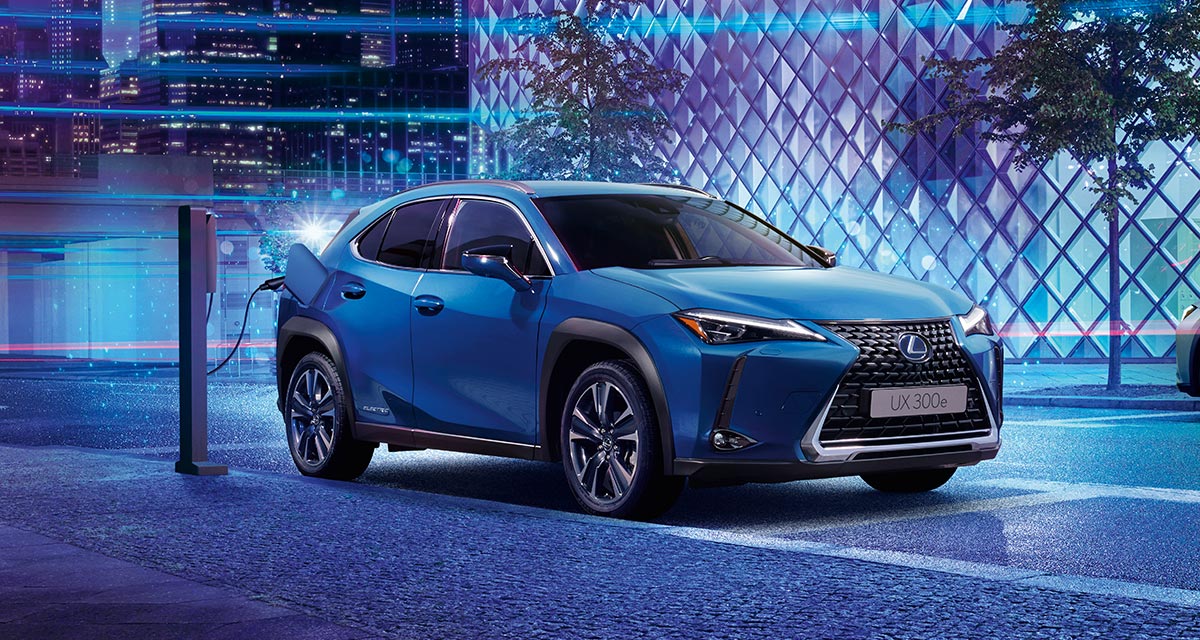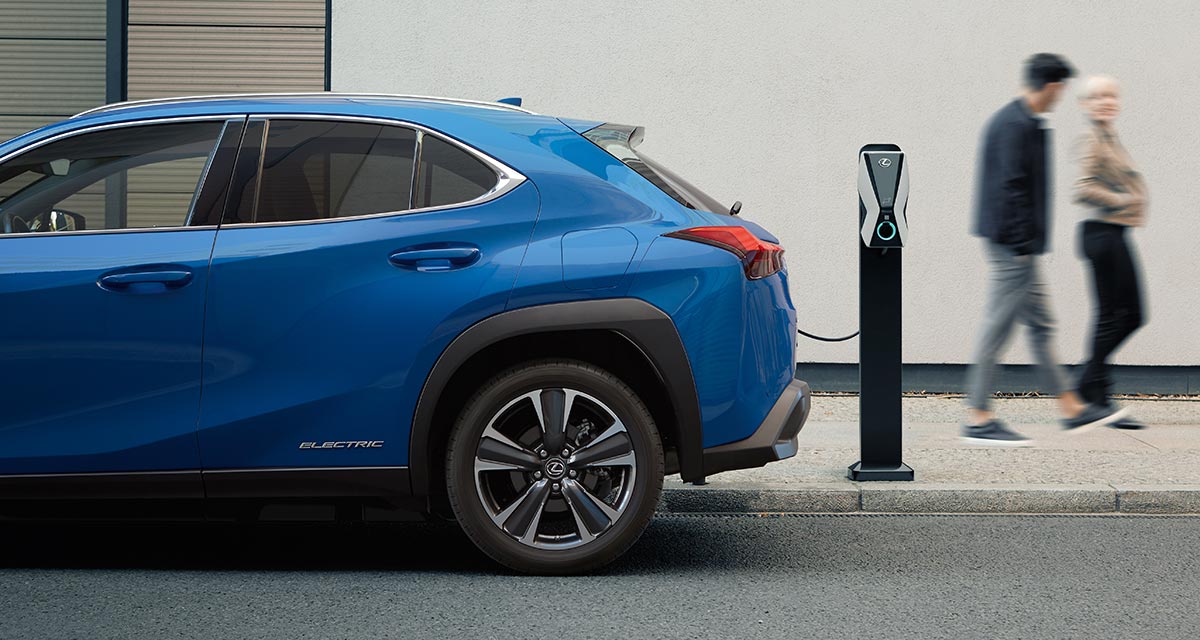internalaudit
Expert
- Messages
- 1,227
- Reactions
- 1,180
Also FWD. Could it be UX250h pricing plus $7.5k Euros?

Lexus has debuted the UX 300e in China today, the brand’s first pure-electric vehicle. Available only in Europe, China, and Japan, the UXe gets 400km per charge and multiple powertrain modes. The full press release follows.
The first EV from Lexus embodies the refined driving performance and NVH of the brand’s DNA
Legendary Lexus reliability inherited from hybrid electrification technology heritage
Featuring the distinctive design and high functionality of the original UX
Lexus will introduce its first battery electric vehicle (BEV), the UX 300e, at the Guangzhou International Automobile Exhibition, which will be held in Guangzhou, China, from November 22 to December 1, 2019.

Since introducing the RX 400h in 2005, LEXUS has been a pioneer in vehicle electrification technology, playing a leading role in...

For Portugal UX prices are:
-Business, 42.5k €
-Executive +, 46.9k €
-Premium/FSport, 50k €
-Luxury/FSport+, 60k€
Tesla Model 3:
-SR+, 49k €
-LR, 59k €
-P, 65k €
Tesla Model Y:
-LR RWD, 59k €
-LR AWD, 63k €
-P, 71k €
But we can't forget TMY (LR+RWD) has a 540km WLTP range and a TM3 SR+ has a 409km WLTP range, not NEDC (it's a bit better), so Lexus really needs to get pricing just right. Both of them are bigger, faster, more powerfull, charge faster.
Also, EQC starts at 78k € (450km NEDC, bigger car, more power), a 64kWh Kona is around 45k € (about the same interior size, a lot more range 546km NEDC or 449km WLTP) and a MX-30 will start around 35k € (around 200km WLTP).
Pricing will not be easy because they need to sell them in good numbers to get average CO2 down and avoid fines. If they price it for Hybrid + 7.5k €, maybe they will hard to sell...
EDIT: VW ID.3 1st will also start bellow 39k € and ID.3 Plus 1st will start bellow 45k €, yes it's a hatchback and non-premium brand, but has a 409 WLTP range.... And specially the Plus version, it's very well specced.
No wonder they target Europe. Prices there are much more expensive than here in North America.
Most car MSRP in Canada is like 15-20% less than MSRP in the US, if we factor in the exchange rate. Canadians are less affluent than our American counterparts (they do get deeper discounts off MSRP) and it shows in MSRP pricing. I definitely can't complain.
Only Tesla makes its cars more expensive in Canada.
I like the fact that Lexus is electrifying its current lineup instead of making all-new EV models, which I always found stupid since it just creates overlap with other models. Other manufacturers also always feel the need to make their EVs designed in a very polarizing manner, just so they can be "differentiated" from regular ICE cars, which I am happy Lexus is not doing.
Prices are more expensive because we pay customs and taxes, and they are calculated in the price you see online... roughly 30%-35% at minimum for average EU country.
TMC is late, but somehow I feel like this «compliance car» (UX 300e) will wipe all other «genuine BEVs».
All specs of this car are boringly average.@ssun30 how does this look to you? Whats efficiency like?



For Portugal UX prices are:
-Business, 42.5k €
-Executive +, 46.9k €
-Premium/FSport, 50k €
-Luxury/FSport+, 60k€
Tesla Model 3:
-SR+, 49k €
-LR, 59k €
-P, 65k €
Tesla Model Y:
-LR RWD, 59k €
-LR AWD, 63k €
-P, 71k €
But we can't forget TMY (LR+RWD) has a 540km WLTP range and a TM3 SR+ has a 409km WLTP range, not NEDC (it's a bit better), so Lexus really needs to get pricing just right. Both of them are bigger, faster, more powerfull, charge faster.
Also, EQC starts at 78k € (450km NEDC, bigger car, more power), a 64kWh Kona is around 45k € (about the same interior size, a lot more range 546km NEDC or 449km WLTP) and a MX-30 will start around 35k € (around 200km WLTP).
Pricing will not be easy because they need to sell them in good numbers to get average CO2 down and avoid fines. If they price it for Hybrid + 7.5k €, maybe they will hard to sell...
EDIT: VW ID.3 1st will also start bellow 39k € and ID.3 Plus 1st will start bellow 45k €, yes it's a hatchback and non-premium brand, but has a 409 WLTP range.... And specially the Plus version, it's very well specced.
This segment (subcompact SUV with 400km-class range) seems to be the sweet spot and a fighting ground for any new comer. Audi and Mazda just embarrassed themselves by using puny batteries with insufficient range. Nissan Ariya, Honda X-NV, and Toyota C-HR EV look pretty close. I'd say Hyundai still has the strongest offering with the Kona/Encino EV with its slight range advantage (it did just blow up a house not long ago though)
Manufacturer EV range quotes are for reference only. Some overpromise while some underpromise. Lexus is giving a very conservative estimate here. We'll have to see real world tests to judge the true range.The announced 400km range of the UX is given in NEDC, whereas best market performers in the compact cross-over segment (Hyundai Kona EV, Kia e-Niro and Kia e- Soul) achieve 450 kms in WLTP. I guess the UX in WLTP will get max. 350 kms.
This is a serious disappointment to me, especially combined with an estimated price level of 50k €.
Also the onboard charging capacity is very low.
Lexus is too much of a late follower, but should be in the forefront of electrification if it still wants to try to achieve something in Europe.
